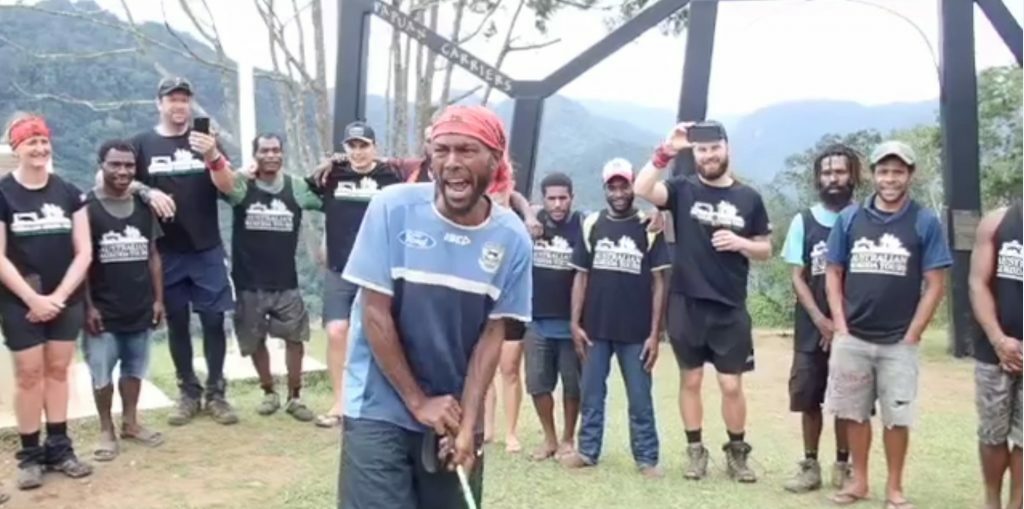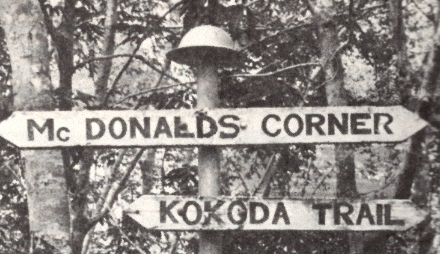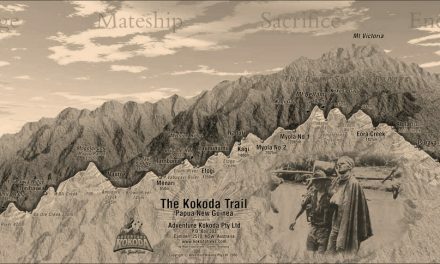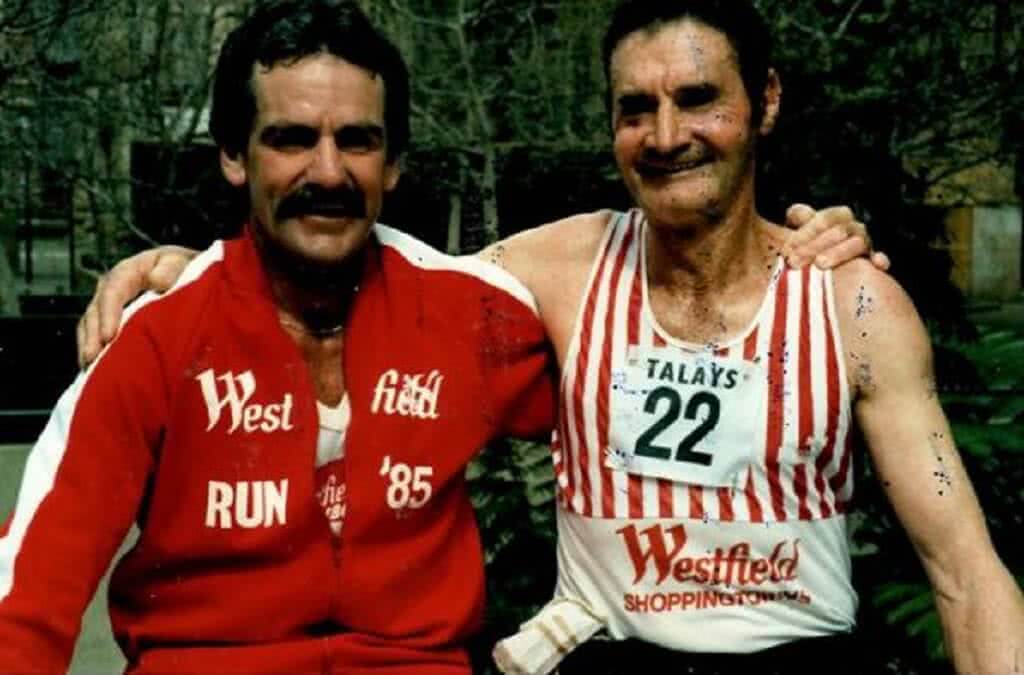‘Commemoration’ of wartime sacrifice is defined as ‘quiet contemplation’.
A trek across the Kokoda Trail should therefore be regarded as a respectful pilgrimage in the footsteps of the brave – through a rugged jungle shrine linked to our Australian military heritage in the ‘land of the unexpected‘!
It should not be degraded as a ‘bucket-list’ item; a ‘Tough Mudder‘ event; or a ‘bogan challenge‘ complete with guitars and cringeworthy ‘Ozzie, Ozzie Ozzie – ‘Oi, ‘Oi, ‘Oi’ chants.
The jungles of Papua New Guinea can be a dark and foreboding place for the unwary. During the Kokoda campaign darkness came swiftly as the overhead canopy didn’t allow any form of twilight to penetrate below. Fires were forbidden because the glow of embers and the smell of dank smoke could betray a position to the enemy.
Before the transition to darkness each day soldiers would lie still during ‘stand-to‘ in shallow pits lest the enemy used the cover to launch a surprise attack. The silence in such an environment is deafening – until virtual ‘battalions’ of cicadas (known to the diggers as ‘6 o’clock crickets‘) pierce the air with shrill buzzing calls lasting for up to half-an-hour. For the first-timer in the jungle it can be unnerving but it soon becomes part of the normal cycle of activity as they acquaint themselves with their environment and the sounds of nature.
Speak to any veteran of the Templeton’s Crossing campaign and they will quickly ask if the ‘6 o’clock crickets‘ are still around.
They still are – but they now have competition from a new species of ‘chanting bogans!‘
Chanting bogans are keen to tick the Kokoda trek off their bucket list and get across as quickly and as economically as possible.
Low-rent Kokoda operators seem to target the bucket-lister market because they are low maintenance. They don’t want anything more than a superficial introduction to the wartime history – in fact they don’t want anything that will detract from their ego-driven mission of “doin’ Kokoda mate“!
Just as the peace of a ‘stand-to’ was often shattered by the ‘6 o’clock crickets‘ during the Kokoda campaign the solemnity of a battlefield presentation or service is now disrupted by chanting bogans shouting ‘Ozzie, Ozzie, Ozzie – Oi, Oi, Oi’ as a cult-like form of ‘reveille’ or to keep cadence as they stomp on by.
Those on a historical pilgrimage across the trail have cause to cringe when they are unfortunate enough to encounter these bogan war cries during their treks.
Six O’clock crickets have endured for centuries and will continue their shrill orchestra for centuries to come. It is hoped that the new bogan-chant, ‘Ozzie, Ozzie, Ozzie – Oi, Oi, Oi’ will not be as long lived.
HOW TO IDENTIFY A BOGAN TREK OPERATOR
They wake up to a ‘bogan reveille’
they hug each other and grunt out a bogan chant . . .
they yell it out . . .

they never let up . . .
if they’re not chanting,they just pull out their guitars and sing . .
Bogan operators are generally not familiar with the military history of the Kokoda campaign. They have no understanding of the ‘phases of war’ or the principles of each phase. As a result, they are unable to provide more than a superficial briefing at each battle-site.
They cover this professional deficiency by diverting the attention of their trekkers with ‘singalongs’ from their PNG support crews or using ‘motivational chants‘ and ‘group hugs’ as a form of ‘group bonding‘.
Other tell-tale signs of a ‘bogan operator‘ are:
- The frets on the necks of guitars sticking out the top of backpacks among your PNG support crew – a dead-set giveaway.
- The lack of a full trek uniform (cap, t-shirt, and shorts) professionally printed) – bogan operators usually go cheap with a few t-shirts with their company logo, but nothing else.
- Check where your PNG guides and porters are sleeping after dinner – if they are snug in their huts with a zippered sleeping bag and foam sleeping mat provided by their tour operator, they are legit – but if they have to bring their own blanket to keep warm, you’re with a bogan company.
- Check the weights of the backpacks among your PNG support crew – if they weigh more than 18 kg (the maximum allowed during the Kokoda campaign) you’re with a bogan company.
- Ask your PNG support crew how much they get paid – if it’s less than PNGK70 per day (plus a bonus of PNGK70 at the end of the trek) and a ‘Walk-Home Allowance of PNGK 250 – you’re with a bogan company.
- And ask them WHEN they get paid. Legitimate tour operators pay them on the last day of each trek – bogan operators often take up to a week to pay them while their trekkers are celebrating with ‘Moet Champaigne‘ in their ‘5-Star hotels.





